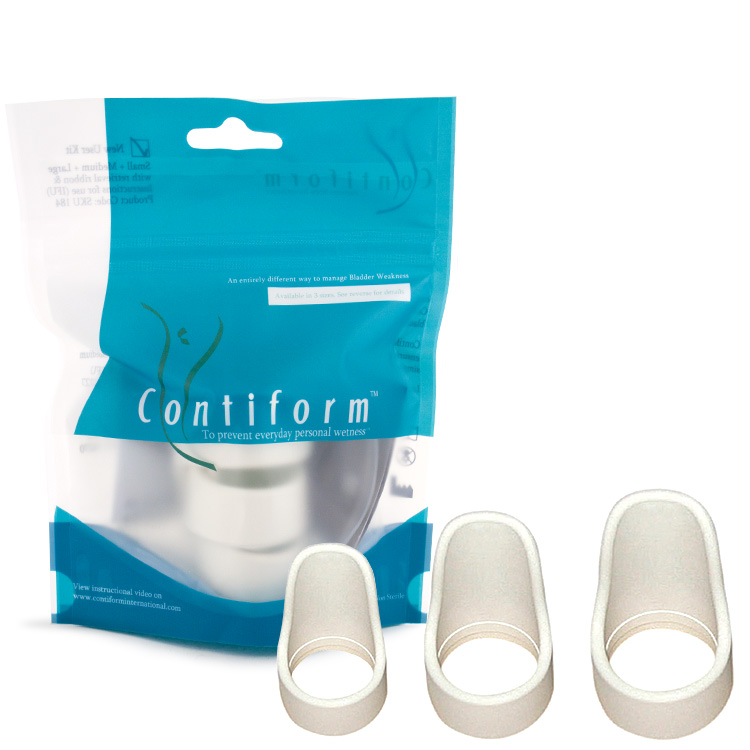1 in 10 women will have had surgery for a prolapse by the time they are 80. So, despite it not being talked about much, pelvic organ prolapses are very common.
Some prolapse diagnoses come as a complete surprise. You may be diagnosed following a routine examination such as a smear test, and not have experienced any symptoms or pelvic discomfort. Or you may have not recognised the symptoms you were feeling as being a result of a prolapse. Such as a dragging sensation in your vagina, or issues with fully emptying your bladder or bowel.
If you have been diagnosed with a pelvic organ prolapse, you will be wondering what to do next:
- Do nothing as a prolapse is not life threatening.
- Treat your prolapse with non-surgical treatments and lifestyle changes.
- Treat your prolapse with surgery and lifestyle changes.
Following a diagnosis by your GP you should know what grade / stage your prolapse is. Only women suffering from the most severe grades of prolapse are recommended to undergo surgery. Non-surgical treatments can be completed in isolation, but you will see the most benefit if you incorporate them all into your life. They can also be used as preventative measures if you believe you are at risk of developing a pelvic organ prolapse. To learn more about preventing a pelvic organ prolapse, visit our How to Prevent a Vaginal Prolapse page.
1. Daily Pelvic Floor Exercises (aka Kegel Exercises)
You've probably already had a go at trying pelvic floor exercises, but most women forget to do them each day, or struggle and give up insisting that they don't work. It's not uncommon to struggle to find the correct muscles or even forget to regularly do them. Sadly, most of us give up before we start to feel the benefit. But by sticking with it, they are proven to increase the tone and strength in the muscles, lifting and holding your pelvic organs back in place.
To make your exercises even more effective, try an electronic pelvic toner. These contain exercise programmes specifically targeted for each type of prolapse so you can make the most out of your time.
Use a biofeedback machine to follow your progress. There are also apps available, like the NHS squeezy app, which can remind you to do your exercises and help you follow your progress.
2. Vaginal Pessaries

Vaginal pessaries are fast becoming the top option by women who want to support severe prolapses whilst they strengthen their pelvic floor with pelvic floor / Kegel exercises. A prolapse pessary can also be fitted as a permanent measure and changed by a healthcare professional around every six months.
The benefits of using a pessary include:
- They take pressure off your pelvic floor whilst you concentrate on strengthening it.
- They can stop the prolapse from developing further by acting as support.
- You can remove it at any point if your prolapse is sufficiently repaired or your pelvic muscles have strengthened enough.
- They can be used during your pregnancy, and removed for delivery.
- They can be used following child birth.
- If you have decided to opt for surgery, you can wear a pessary to relieve the symptoms whilst you wait. You may even reconsider undergoing the surgery once you become familiar with how easy using a pessary can be.
- You can continue to be active, there is no recovery period following having a pessary fitted.
- They do not prevent you from falling pregnant.
- You avoid having to undergo surgery!
The risks of using a pessary include:
- Risk of infection and ulceration if the pessary rubs - the pessary can be removed straight away and you can be prescribed with an oestrogen cream to apply to the affected area to encourage healing. Once you are healed, you can get a new pessary fitted.
- Occasionally you can experience urinary incontinence due to the position of the pessary - your GP can adjust the pessary to improve this.
- You may experience unpleasant vaginal discharge - removing the pessary will clear this up.
- The pessary can move and be no longer beneficial - your GP can adjust the pessary to improve this.
Read more about how pessaries work here.
3. Lifestyle Changes

Many of the lifestyle changes you can make to prevent a prolapse, can also improve the condition of your prolapse. When in conjunction with pelvic floor /Kegel exercises, you may see a huge improvement and mild and moderate prolapses may be resolved completely. So don't be hesitant, make a change:
- maintain a BMI of less than 30
- avoid heavy lifting
- avoid constipation and straining
- treat persistent coughs
- perfect your posture
- take daily vitamin d3 supplements
- avoid high impact exercise

4. Hormone Treatment and Vitamin D3 Supplements
Supplements and topical oestrogen creams can be prescribed to boost the hormones you begin lacking through menopause and ageing.
Vitamin D3 is an all round good supplement to begin taking. It can help with many things, including period pain and weight loss and has been clinically proven to benefit your pelvic floor. 80% of reproductive age women are insufficient in Vitamin D, putting them at risk of not just prolpse, but other conditions including cardiovascular disease and diabetes.
Is Surgery Right For Me?
Surgery is a last resort reserved for women who have tried non-surgical treatments but they have not provided a quick enough or sufficient improvement in their quality of life. 1 in 10 women who suffer from a prolapse select surgery. 25-30% of which will experience a second prolapse after the surgery and as a result 19% will undergo a second surgery. The others will look at non-surgical treatments to improve their symptoms rather than go through a second surgery.
The most important thing to note is that all pelvic organ prolapses are a result of a weak pelvic floor, which is why organs often prolapse together. There is no surgical procedure that can restore the strength in the pelvic floor muscles. Surgeries instead involve each organ being stitched back into place to prevent them from being able to move. Because of this you will still need to incorporate non-surgical treatments into your life, after going through surgery, to support the surgery and prevent recurrence.
Sources
Aggarwal, N. Sharma, S. (2017) Journal of Mid-Life Health. Vitamin D and Pelvic Floor Disorders. [online] 8(3), p 101-102. [viewed 28/03/2018]. Available from: https://www.ncbi.nlm.nih.gov/pmc/articles/PMC5625572/
Choi, K. H Hong, J. Y. (2014) Korean Journal of Urology. Management of Pelvic Organ Prolapse. [online] 55(11), p 693-702. [viewed 20/03/2018]. Available from: https://www.ncbi.nlm.nih.gov/pmc/articles/PMC4231145/
Farag, K. A. Uzoma, A. (2009) Obstetrics and Gynecology International. Vaginal Vault Prolapse. [online] 275621, p 1-9. [viewed 21/03/2019]. Available from: https://www.ncbi.nlm.nih.gov/pmc/articles/PMC2778877/
Giarenis, I. Robinson, D. (2014). F1000Prime Reports. Prevention and management of pelvic organ prolapse. [online] 6(77). [viewed 27/03/2018]. Available from: http://f1000researchdata.s3.amazonaws.com/f1000reports/files/9008/6/77/article.pdf
Kekre, A. Jacob, K. S. Navaneethan, P. R. Varghese, L. (2015) Journal of Mid-Life Health. Vitamin D deficiency in postmenopausal women with pelvic floor disorders. [online] 6(2), p 66-69. [viewed 28/03/2018]. Available from: https://www.ncbi.nlm.nih.gov/pmc/articles/PMC4481742/
NHS. (2018) Pelvic organ prolapse [online] National Health Service, 2018 [viewed 14/03/2018]. Available from: https://www.nhs.uk/conditions/pelvic-organ-prolapse/
NICE. (2015). Urinary incontinence in women: management, 1 Recommendations [online] National Institute for Health and Care Excellence, 2015 [viewed 14/03/2018]. Available from: https://www.nice.org.uk/guidance/cg171/chapter/1-Recommendations#physical-therapies
NICE. (2017). Draft Guideline scope: Urinary incontinence (update) and pelvic organ prolapse in women: management [online] National Institute for Health and Care Excellence, 2017 [viewed 26/03/2018]. Available from: https://www.nice.org.uk/guidance/gid-ng10035/documents/draft-scope
Propagator Ltd. (2018). squeezy [online] Propagator Ltd, 2018 [viewed 29/03/2018]. Available from: http://www.squeezyapp.co.uk/
Royal College of Obstetricians and Gynaecologists. (2013). Information for you: Pelvic Organ Prolapse [online] Royal College of Obstetricians and Gynaecologists, 2013 [viewed 26/03/2018]. Available from: https://www.rcog.org.uk/globalassets/documents/patients/patient-information-leaflets/gynaecology/pi-pelvic-organ-prolapse.pdf
Women's Health Concern. (2015). Prolapse: Uterine and vaginal [online] Women's Health Concern, 2015 [viewed 14/03/2018]. Available from: https://www.womens-health-concern.org/help-and-advice/factsheets/prolapse-uterine-vaginal/




